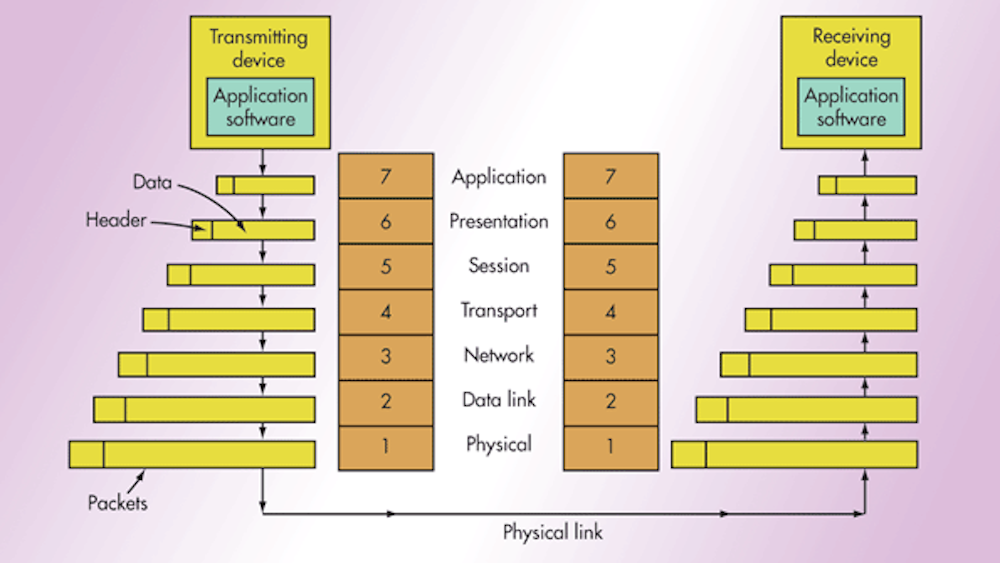참고 링크
영어 발표를 위해 직접 정리했습니다.
Open Systems Interconnection Model
- Standardized 7 stages of communication functions of a telecommunication or computing system

What for?

- To track the flow of data transmission Encapsulation : Each time data passes through each layer, a header is added. It makes the data transmitted in a set order regardless of the data type.
- To find the source of a problem faster (e.g. Ping)
- To enhance compatibility between networking hardwares
Let's dive into the each layer
:max_bytes(150000):strip_icc():format(webp)/layers-of-the-osi-model-illustrated-818017-finalv1-2-ct-ed94d33e885a41748071ca15289605c9.png)
- Physical Layer
- Transfers binary data using physical cable. (e.g. cabels and hubs)
- Electrical on/off
- Forwards data without any involvement in what the data is, what errors are present, etc.
:max_bytes(150000):strip_icc():format(webp)/layers-of-the-osi-model-illustrated-818017-finalv1-3-ct-9d3e1bf44a554e3db31f706201fc69f6.png)
- Data Link Layer
- Divided as Media Access Control sub-layer and Logical Link Control sub-layer.
- MAC sub-layer controls authorization of data access and transmission. (MAC address)
- LLC sub-layer cheks physical data transmission errors.
:max_bytes(150000):strip_icc():format(webp)/layers-of-the-osi-model-illustrated-818017-finalv1-4-ct-9ffde2c7142849819c3fcf5e305a242f.png)
- Network Layer
- addresses using IP, the logical address.
- selects the safest and fastest path selection to the destination.
- forwards data packet.
⇒ Routing
:max_bytes(150000):strip_icc():format(webp)/layers-of-the-osi-model-illustrated-818017-final-5-ct-373fc5a9edc74359819021555f37467d.png)
- Transport Layer
- delivers data across network connections by transport protocols. (TCP, UDP)
- Transport protocols support error recovery, flow control, and support for re-transmission.